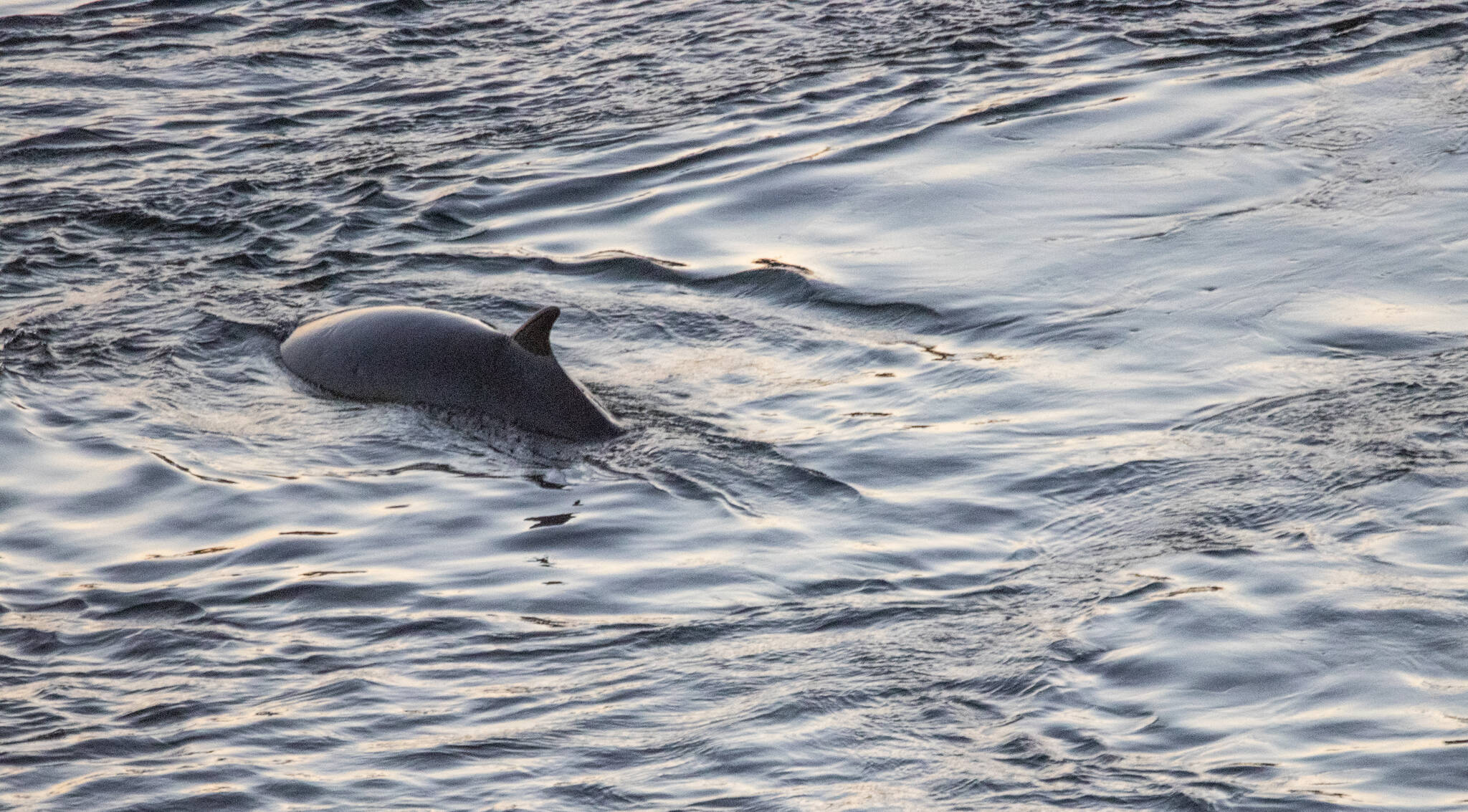Though perhaps not as charismatic as some other types of baleen whales seen swimming around the Salish Sea, there’s plenty to find fascinating about the lesser known minke whale.
Last week the Orca Network received five sighting reports of minke whales, including one at Deception Pass Bridge.
Rachel Haight of Orca Network was lucky enough to catch a glimpse of the minke whale the night of July 11 as she was, coincidentally, driving home from a whale-watching boat tour in Anacortes.
“It was a nice surprise,” the Oak Harbor resident said. “No one had really known it was headed that way.”
People with cameras and binoculars, on the lookout for orcas, alerted her that something was down there. She stopped to take a look, and was rewarded with the sight of a minke whale, presumably feeding near the bridge. So she captured some photos from afar.
“I’ve been on the island for 11 years now and have just been chasing whales that whole time and photographing them,” she said. “I’ve seen orcas from the bridge now for the past 10 years. But the minke, that was the first and a big highlight and that was pretty cool.”
Frances Robertson, a San Juan Island resident, has been part of a project studying minke whales since 2005. Though she said it’s not unusual to see a minke whale from Whidbey Island, the population itself is rare, at approximately 45 individuals in the Puget Sound region.
“That’s a little bit odd for minke whales, because they’re the most prevalent whale on the planet,” she said.
Minke whales are present in all oceans, with some global counts estimating close to one million of them.
Surveying work completed during the summer months has determined that the Pacific Northwest population seems to return every year with some regularity in order to feed on forage fish, such as herring and Pacific sand lance. Minke whales are solitary creatures that tend to prefer traveling alone throughout Puget Sound, although some have been observed in small groups of twos or threes on occasion.
“Sometimes I joke that they’re more residents than southern resident killer whales because we do see these animals coming back year after year with pretty decent consistency,” Robertson said.
Adult minke whales measure between 24 and 33 feet and weigh around 22,000 pounds. Despite their size, they’re not easy to spot, which has made counting them difficult. Even something as simple as choppy water will obscure them from view.
“They’re pretty squirrely. They’re hard to keep track of,” Robertson said. “They’re not the whale that most whale-watching folk will go to right away because they’re hard to see.”
Minke whales are known to live about 50 years. Robertson has been able to match individuals in the regional population to those identified in a project that originated in 1980. Photos of the minke’s fins, flank, coloring and scarring patterns are used to identify individuals. It can be more challenging than identifying a humpback or killer whale.
Robertson was not able to identify the minke in the recent photos taken by Haight.
There is still much that is unknown about the local population of minke whales, including where they go during the wintertime to breed. Robertson said the theory is that it’s more offshore, on the continental shelf but in the open ocean where they have protection from transient killer whales, which prey on them. Minke whales’ only defense against the orcas is to swim away quickly.



